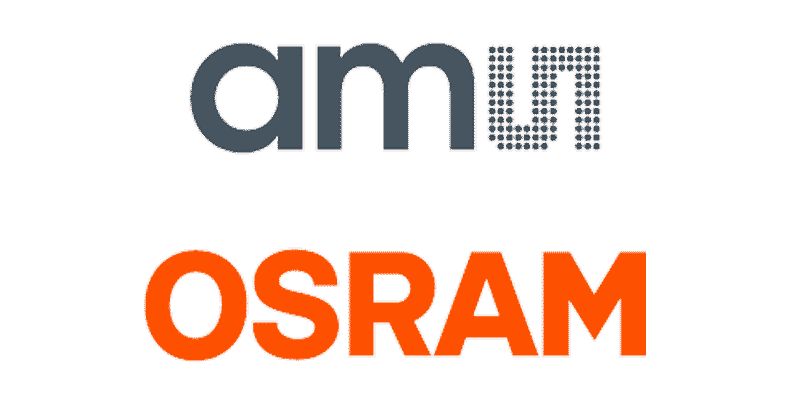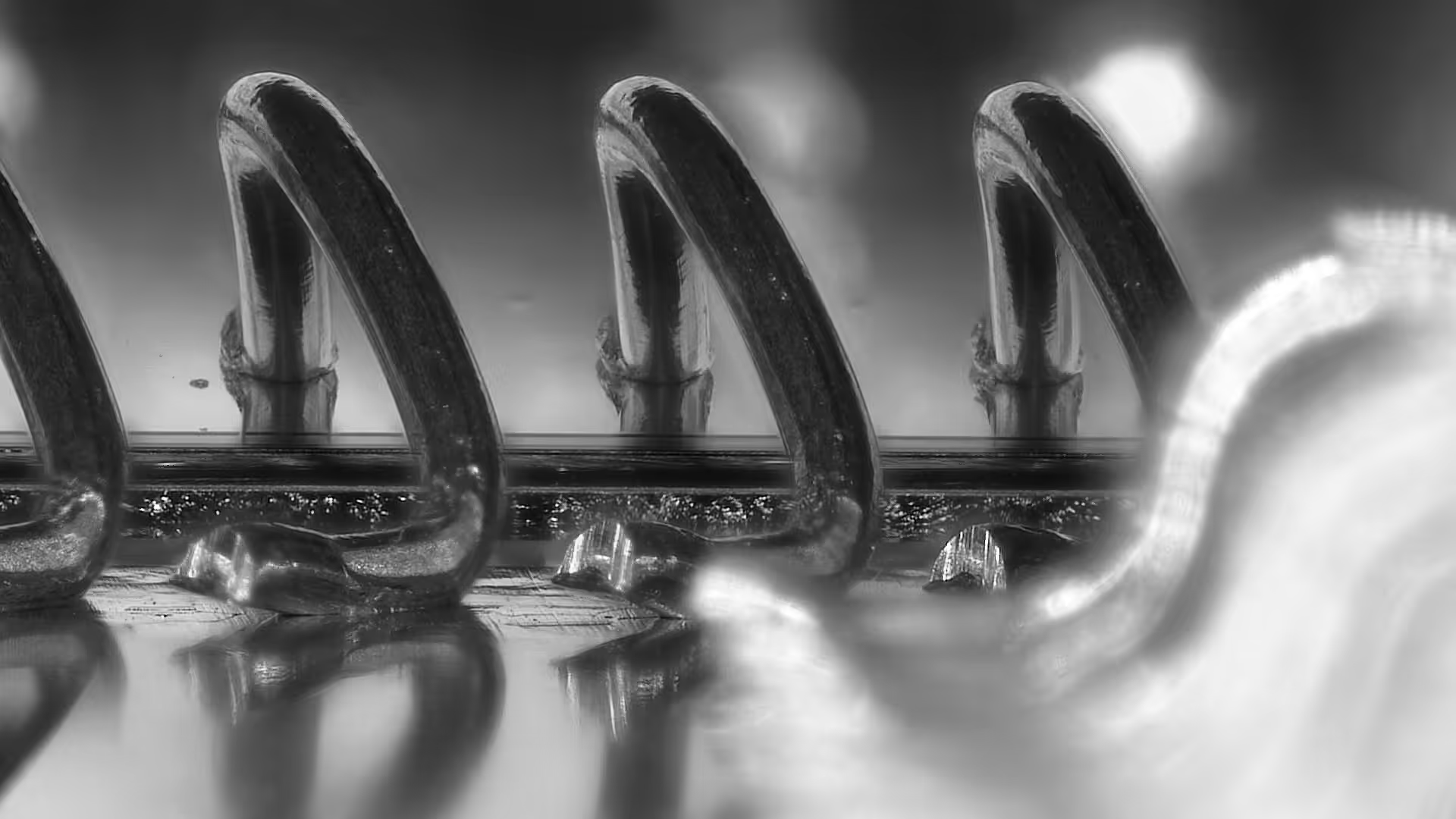Bondtests, Studien, Musterbau, Prototypen
Drahtbondprozesse mit Dünn- oder Dickdraht von 17,5 µm bis 500 µm Drahtdurchmesser sind auf vollautomatischen Bondautomaten verfügbar und stehen für Kundenprojekte zur Verfügung. Unsere Spezialität sind kurze Laufzeiten. Wir takten die Projekte innerhalb eines Zeitrahmens von maximal 8 Wochen ein und stellen so eine zügige Bearbeitung neuer Kundenaufträge sicher.


Prototypenbau und umfangreiche Bondtests
Bei Bond-IQ sind wir auf Drahtbondtests, Machbarkeitsstudien und die Montage von Prototypen spezialisiert, um die spezifischen Anforderungen Ihres Projekts zu erfüllen. Mit unseren vollautomatischen Drahtbondmaschinen können wir sowohl dünne als auch dicke Drähte mit Drahtdurchmessern von 17,5 µm bis 500 µm bonden. Unser Fokus auf kurze Durchlaufzeiten bei kleinen Losgrößen stellt sicher, dass neue Kundenaufträge zeitnah bearbeitet werden - in der Regel werden Projekte innerhalb von maximal 8 Wochen terminiert.
Ausgestattet mit einem umfangreichen Portfolio an Drahtbondtechnologien und modernsten Analysegeräten bieten wir schnelle und effektive Lösungen für Ihre Herausforderungen. Ganz gleich, ob Sie elektrisch funktionsfähige Baugruppen benötigen oder die Machbarkeit einer neuen Anwendung testen wollen, unser Expertenteam kann Ihnen helfen, Ihre Ziele schnell und nach Plan zu erreichen.
Unsere technischen Möglichkeiten
Entdecken Sie die Geräte und Maschinen, die unsere Kreativität und Qualität ermöglichen.

Bondbereich 6 Zoll x 8 Zoll (15 cm x 20 cm)
Manuelles und vollautomatisches Bonden
Umrüstbar auf mehrere Bondköpfe für Ball/Wedge, Wedge/Wedge und Dickdraht Bondverfahren

Bondbereich 4 Zoll x 4 Zoll (10 cm x 10 cm)
Manuelles und vollautomatisches Bonden und Testen
Umrüstbar auf mehrere Bondköpfe für Ball/Wedge, Wedge/Wedge und Dickdraht Bondverfahren
Umrüstbar auf manuelle und vollautomatische Pull- und Schertests
BAMFIT-fähig (Gen.2)

Bondbereich 4 Zoll x 4 Zoll (10 cm x 10 cm)
Manuelles und vollautomatisches Testen
BAMFIT-Prüfung an Dickdrähten von 125 µm bis 500 µm aus Aluminium und bis maximal 300 µm aus Kupfer

Testbereich 3 Zoll x 3 Zoll (7,5 cm x 7,5 cm)
Manuelle Pulltests an Dünndrähten für Kräfte bis 100 cN

Bondbereich 6 Zoll x 8 Zoll (15 cm x 20 cm)
Vollautomatisches Bonden und parallele Erfassung von Prozessdaten und Umgebungsparametern
Simulation einer in-situ überwachten Drahtbondproduktion

Phenom Desktop-REM für kurzfristige Analysen an Drahtbonds und Oberflächen
Vergrößerung typischerweise bis maximal 5.000-fach

Olympus LEXT Konfokalmikroskop für Rauheits- und Topographiemessungen

Unverzichtbares Standard-Werkzeug im Drahtbonden für alle Applikationen und Drahtdurchmesser
Sichtbereich bei voller Vergrößerung und Auflösung ca. 125 µm x 125 µm

Werkzeug zur Dokumentation (Ein- und Ausgangsprüfung) und schnellen visuellen Prüfung von Prototypen nach dem Bonden
5830 (140 kHz) und 5630 (100 kHz) Bondkopf für 17,5 µm bis 75 µm Drahtdurchmesser
Aluminium, Gold und Kupferdraht
Sondermaterialien nach Abstimmung
5810 (140 kHz) und 5610 (58 kHz) Bondkopf für 17,5 µm bis 50 µm Drahtdurchmesser
Gold und Kupferdraht
5850 (58 kHz) Bondkopf für 125 µm bis 500 µm Drahtdurchmesser
Aluminium, CuCorAl und Kupferdraht (max. 300 µm)
Sondermaterialien nach Abstimmung
Schermeißelbreiten von 80 µm bis 360 µm für Scherkräfte bis 500 cN
Für Ball-Schertests, Dickdrähte bis 200 µm Durchmesser und Probenpräparation (z.B. Schertests an AlSi1-Wedgebonds)
Hochauflösende Lichtmikroskopie zur Beurteilung der Bruchbilder
Schermeißelbreiten bis zu 1,2 mm für Scherkräfte bis 5000 cN
Für Dickdrähte ab 250 µm Durchmesser und kleine Chips bis maximal 1 mm x 1 mm Kantenlänge
Hochauflösende Lichtmikroskopie zur Beurteilung der Bruchbilder
Pullkräfte von 100 cN bis 5000 cN
Für Dünn- und Dickdrähte von 17,5 µm bis 500 µm Durchmesser
Hochauflösende Lichtmikroskopie zur Beurteilung der Bruchbilder
FDM-Drucker zur Verarbeitung von PLA
Im Einsatz für Bauteilhalterungen (ohne Heizung), Transport-/Lagerboxen, Bonderzubehör, Montagehilfen
FDM-Drucker zur Verarbeitung von PLA, ASA, PETG und Sondermaterialien (ESD und CF)
Im Einsatz für Vorführ- und Arbeitsmodelle (Mockups), großformatige Halterungen
Mehrfarbdruck für Ansichtsmuster in Bondseminaren und Trainings
FDM-Drucker zur Verarbeitung von PLA, ABS und TPU
Geeignet für Zwei-Materialdruck
Im Einsatz für Transport-/Lagerboxen, Montagehilfen, Vorführ- und Arbeitsmodelle (Mockups)
Verarbeitung von Folien, Holz, Verpackungsmaterialien, Schaumstoff
Beschriftung von Gehäuseblenden
Resin LCD-Drucker für flüssige Harze
Im Einsatz für detaillierte Vorführ- und Arbeitsmodelle, Ansichtsmuster in Bondseminaren und Trainings
Sicherstellung eines einfachen ESD-Workflows für Komponenten mit unbekannter ESD-Empfindlichkeit, Absicherung gegen Komponentendefekte
Eigenentwickelte Softwarelösung zu Extraktion und Visualisierung von BAMFIT Messdaten (Stromverläufe, Frequenzen)
Einsatz in der Riss- und Lebensdaueranalyse an Dickdrahtbonds
Eigenentwickelte Softwarelösung zur Analyse von Deformationsdaten aus dem Drahtbondsystem, erweiterbar auf Frequenz-, Strom- und Phasenverläufe
Einsatz bei allen Drahtbondstudien zur Untersuchung des Einflusses von externen Faktoren auf die Bondqualität
System zur Analyse von Bewegungsabläufen im Bondprozess per Videoanalyse
Im Einsatz für die Optimierung von Loopparametern und Knickverhalten von Drähten während der Verfahrbewegungen des Drahtbonders
Erleichtert die Bestimmung von Winkel-Korrekturfaktoren im Pulltest
Wir realisieren Ihre Prototypen in Drahtbondtechnik
Tests & Musterbau
Ausgestattet mit einem umfangreichen Portfolio an Drahtbondtechnologien und unterstützenden Geräten für Analyse und Prototyping können wir Ihnen schnell Lösungen für Ihre Probleme bieten. Ob Sie nur elektrisch funktionsfähige Baugruppen benötigen oder die Machbarkeit einer Anwendung testen wollen, mit unserer Unterstützung können Sie Ihre Ideen schnell und zielgerichtet umsetzen.

















































































































































Einige unserer Drahtbondprojekte
Insights from our customers
Each project represents a unique partnership, and we take pride in the impactful results we achieve together. Below, you’ll find testimonials and case studies from clients who have entrusted us with their goals—whether to drive growth, enhance efficiency, or unlock new potential. Their success stories inspire us to continue delivering exceptional value and building lasting relationships.
Design and process adaptation led to a reduction in process time from 45 min to less than 10 min with a simultaneous reduction in material costs."
— Large German mechanical engineering company
"Development of a comprehensive supplier specification for our printed circuit boards - first version already after 24 h, review and release at our company after only 5 days."
— German automotive supplier
"Inquiry, callback and problem solving within one afternoon. All by phone and within only 30 min despite a tricky challenge."
— Medium-sized contract manufacturer
Ihr schnellster Weg zu einer Zusammenarbeit mit uns

Kontaktieren Sie uns für Beratung & Hilfe

Kontaktieren Sie uns für Beratung & Hilfe

Häufig gestellte Fragen
We handle both thin and thick wire bonding processes, accommodating wire diameters from 17.5 μm to 500 μm. Our fully automated wire bonding machines support various bonding techniques and materials, enabling us to meet a wide range of project requirements for testing, feasibility studies, and prototypes.
We prioritize quick turnarounds and aim to schedule projects within a maximum of 8 weeks. For many projects, such as feasibility studies or small prototype batches, we can complete work within 2-10 days, depending on the complexity and number of parts required. This flexibility allows us to meet urgent deadlines and small-lot requirements.
Our feasibility studies test new or unknown surfaces, wire materials, bonding tools, geometries, and loop shapes. We conduct a focused series of experiments with thorough documentation, providing a cost-effective initial assessment of your project’s feasibility. Most feasibility studies take between 0.5 and 2 days, offering a quick yet detailed evaluation.
Yes, we wire bond small prototype production batches. After agreeing on all assembly details through email or web conference, we can deliver 10-100 parts within 2-10 days. For larger orders (100+ parts), the timeline depends on workload and project complexity.
We offer comprehensive bond testing, including bond parameter variation followed by visual inspection and pull/shear testing according to DVS-2811 or other applicable standards. We can perform bond tests on new surfaces using customer-supplied samples, ensuring statistical robustness with sufficient test space.
We provide detailed reports with all testing results, including visual inspections, pull/shear test data, and analysis outcomes. For customers who prefer a summary, we can offer a condensed application report, which is useful for documenting the bonding material’s performance or for marketing purposes.
Yes, we encourage customer collaboration. You’re welcome to work with our team on-site to build prototypes, inspect samples, and get an understanding of any anomalies.
We are equipped with a comprehensive portfolio of advanced wire bonding machines from F&S Bondtec and analytical tools to support testing, prototyping, and feasibility studies. Our fully automated machines are capable of precise wire bonding with both thin and thick wires, and we also use manual bonding techniques for small sample setups.
Our testing procedures align with DVS-2811 standards for pull and shear tests, ensuring high-quality and consistent bond strength evaluations. If your project requires other specific standards, please let us know, and we’ll accommodate them where possible (e.g. MIL-883, ASTM F459, ASTM F458, JEDEC JESD22-B116B, AEC Q100-001C, AEC Q101-003A).
We prefer short lead times for small-lot projects. Our efficient scheduling, combined with our in-house technology and expertise, allows us to complete projects within 2-6 weeks, depending on the project scope. For urgent orders, we’ll work with you to set up timelines that meet your needs.
Yes, we typically require customers to provide the materials and components needed for the project. This ensures that the prototypes and testing closely represent your final product. However, we can work with suitable dummy samples initially to help set up the wire bonding process if your components are not yet available. Furthermore our extensive network of users and suppliers allows us to get materials and equipment quickly if needed.
Prototype assembly includes setting up the wire bond applications on dummy samples, creating bond programs, testing the bonding process, assembling the samples, and performing final inspection. We then package the assembled prototypes and provide a report with wire bond parameters and bond programs if requested.
Yes, when only a few connections are needed, we offer manual wire bonding as a cost-effective solution. For larger batches or complex assemblies, we create a complete wire bonding program to automate the process and ensure precision and repeatability.
We require sufficient sample sizes and test areas to achieve statistically robust results. Our bond tests are carefully structured, with parameter variations, visual inspections, and mechanical pull/shear testing, allowing for reliable data and repeatable results that meet industry standards.
Getting started is simple. Contact our team to discuss your project goals and requirements. We’ll work with you to determine the appropriate testing, feasibility study, or prototype assembly approach, schedule your project, and coordinate the details to ensure a smooth and efficient process.
Unabhängig im Markt und international vernetzt










































